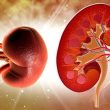The ADVANCE study was designed to evaluate the safety and effectiveness of transcatheter aortic valve replacement (TAVR) with self-expanding prosthesis CoreValve in “real world” patients with symptomatic, severe aortic stenosis at high surgical risk. Patients were enrolled from 44 experimental centers in 12 countries; treatment approach and choice of anaesthesia were determined by the local Heart Team....
An Important Study Shows That Renal Function Must Be Cared for in TAVR
Courtesy of Dr. Carlos Fava. The presence of renal dysfunction in the “real world” is over 25% in patients who undergo transcatheter aortic valve implantation (TAVI). The evolution of this disease among patients who are subjected to a replacement is well known, but evidence for patients who undergo TAVI is still limited, particularly for those who...
Small Annulus: Should We Start Choosing the Valve?
Courtesy of Dr. Carlos Fava. A small annulus in patients with Severe Aortic Stenosis is a real challenge, since it is associated with post-surgical prosthesis patient mismatch (PPM), which negatively affects prosthesis duration and evolution. TAVR has become a good alternative strategy, with better hemodynamic profile and lower PPM incidence in this group. The present study included 246...
End of Discussion on the Impact of Pacemaker After TAVR?
Transcatheter aortic valve replacement (TAVR) is often associated with conduction abnormalities, which usually end with permanent pacemaker (PPM) implantation in 10-40% of patients. Factors predisposing to PPM after TAVR have been studied in great detail, but their short- and long-term clinical impact is still controversial. Recently, outcomes from a large cohort of patients were...
It Is a Fact: Cerebral Protection in TAVR Has Proved to Reduce Stroke and Death
Cerebral ischemic events after transcatheter aortic valve replacement (TAVR) have been identified as independent predictors of morbidity and mortality. New-generation devices have managed to partially reduce the rate of cerebral events, but it still is around 5.5% at 30 days for patients undergoing TAVR through transfemoral access. First data on cerebral protection devices had only shown...
A New Opportunity for Renal Denervation
Courtesy of dr. Carlos Fava. At first, renal denervation enjoyed a considerable boost because, according to early studies, it lowered blood pressure (BP). However, after the results of the SYMPLICITY HTN 3 Trial its popularity decreased. Currently, the development of new technologies and greater operator experience may facilitate a change in this scenario. This...
Very Late Thrombosis in Bioresorbable Scaffolds
The presence of a metallic device interrupts normal laminar flow and creates an artery environment that favors thrombosis, leaving the vessel vulnerable to very late thrombosis. Dual antiplatelet therapy, a better implantation technique, and several improvements in new drug-eluting stents (DES) (thinner struts, and higher polymer stability and biocompatibility) have lowered significantly the incidence of...
Conscious Sedation in TAVR: Is It Advisable?
The fundamental advantage offered by transcatheter aortic valve replacement (TAVR) has always been the fact that it is less invasive than surgical valve replacement. So far, most improvements for these devices have derived in less invasiveness (e.g., by improving the profile of the eluting system). However, there are also cases of “deployment” reduction during the...
The need for dialysis after TAVR increases mortality
Courtesy of Dr. Carlos Fava. Stage III or higher renal impairment is frequent before TAVR, and the need for new dialysis after the procedure may reach up to 20%. Within that percentage, 5% may require permanent dialysis, which increases mortality up to 9 times at one year. In that sense, factors leading to that complication have not...
FOURIER: Efficacy of Evolocumab for Ultra-Low LDL Levels
It seems that a LDL level of 70 mg/dL is no longer low enough for high-risk secondary patients; in consequence, this study attempted to set a new target, one that appears almost impossible to reach: 40 mg/dL or lower. This study, simultaneously presented at the European Society of Cardiology Congress 2017 and published in The Lancet, showed...








